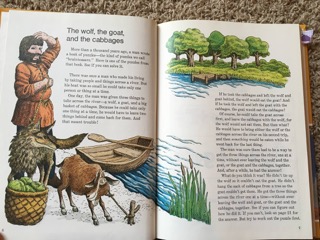
In the series starter, I explained how I acquired my Childcraft set. Once I had it, however, I was still uncertain of how to use it. As I participated in homeschool discussion groups, I noticed that many people would reference Mathemagic in the same conversations which included Sir Cumference, Greg Tang, and other math picture books. I grabbed my copy and sort of fell in.
Mathemagic is laid out brilliantly. It baits the hook by opening with things kids love – puzzles, tricks and games. The first chapter, if read sequentially, takes readers by the hand and welcomes them into the world of math, logic, and the beauty of rational thought.
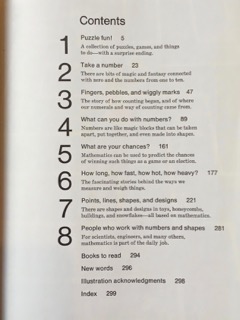
We had so much fun trying to solve the riddles and making Mobius strips. Taking just one 2- page spread/topic spread every couple of days, we saw the power of math in everyday life.
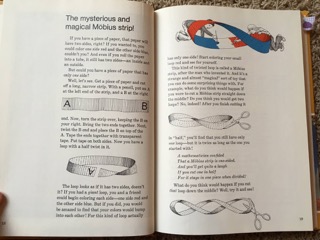
Because we read through Mathemagic as an evolving story, we noticed how each chapter got a little richer, a little more mathematical, but always practical, vibrant, and accessible. After puzzles and riddles, we got the history of numbers, counting, and math.
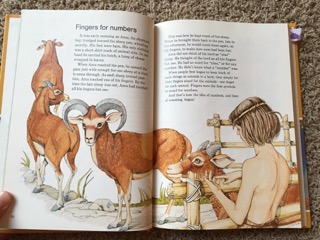
Who knew that the history of math was so complex?! What a joy it was for this non-math family to see how math evolved in various cultures.
While I don’t love all of the illustrations in the modern Childcraft books, I do appreciate how they use illustration to convey concepts. Like this example of square numbers:
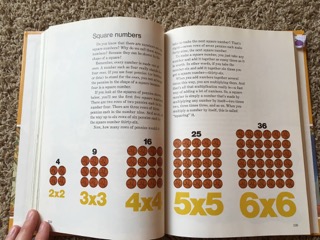
Mathemagic also lays the groundwork for probability and statistics by revealing several brain bending studies in probability:
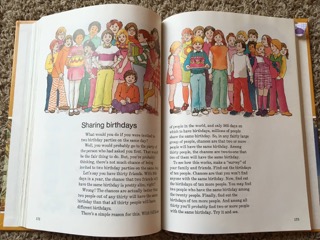
This one was particularly fun. We took some random pages in books and typed them into our word processor and then did a character count. Sherlock is right. The e’s have it!
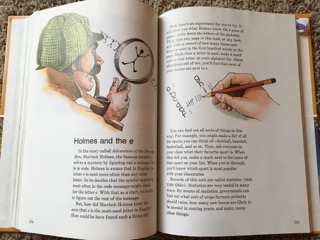
I have always wondered about the names and sizes of volume measurement. The history is a testimony to human ingenuity.
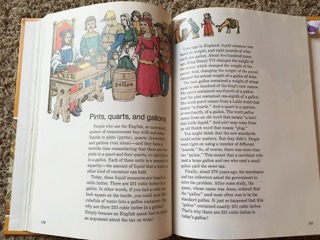
The last sections of the book deal with that overlap area between math and science.
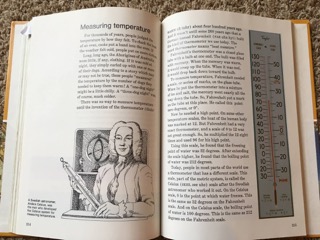
We treat this book as a story book. By letting it do the work that it was designed to do, we have had so many interesting conversations about math and have learned to be curious about numbers and this elegant language of rational thought.
The Sir Cumference books are also wonderful living math story books. There is a place for both in our home. We also have read and loved the Mathematicians are People Too series. We read those biographies when my children were very young (7, 5, and 3). They gave our entire family context for mathematical thinkers. We will certainly revisit them as the kids mature so that they can glean more from them.
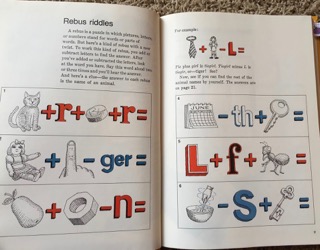
To see which other Childcraft volumes we have reviewed, check out our series page here.
In your planning post, you mention that math is done with Mathemagic and “Daddy.” Do you or your husband have a concept you follow for introducing new ideas? I’m leaning towards ditching the math text and just playing with numbers. But I’m concerned I may miss certain concepts (e.g. some math texts include place or proximity concepts, but I wouldn’t have necessarily lumped that into math).
Not being naturally math people, we do rely on a text. The big kids use Singapore Math. Daddy (Greg) just works through the text and workbook with them at the pace that is right for them. They do this generally daily for 20 minutes each. My husband is a high school administrator but was a band director. We view math as an art (Mathemagic) and a skill (Singapore Math).
To keep math meaningful we have lots of math games and play with math, logic games, brain games, etc.
I know of many families who ditch math texts entirely. I believe that it can be done! But our oldest is making noise about wanting to be an engineer and our middle wants to be a doctor. Just in case, we take a skill work approach on math. -Sara
Just in case you haven’t seen it, we do have a great post on our favorite brain games. 🙂 https://plumfieldandpaideia.com/brain-games/
Yes! I have seen that. And I already have a math text, but it covers a concept a week…so I think I might use that as a guide, but sub in or sub out materials as needed. Some of the exercises already annoy me 🙂
Certainly use something you love! Otherwise it is just painful! I didn’t get serious about regular math lessons with my kids until they were in 1st and 3rd grade. 🙂